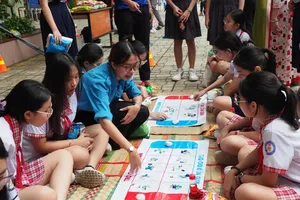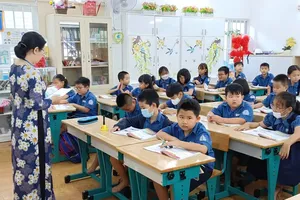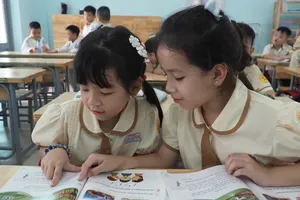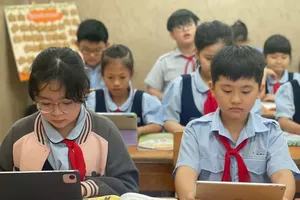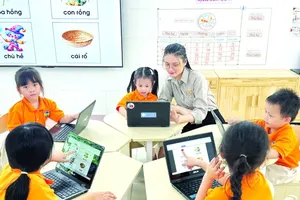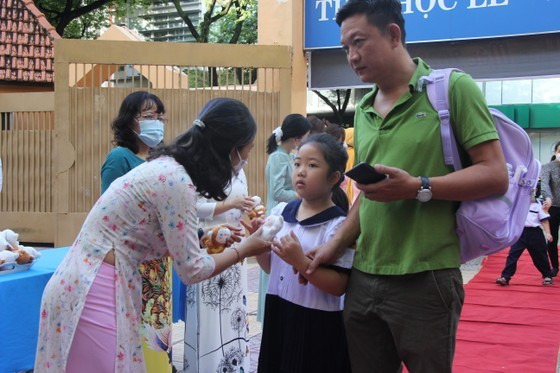 |
A parent takes his daughter to a school in District 1 in the first day of the new school year |
The HCMC Department of Education and Training yesterday afternoon sent its dispatch on strengthening activities to prevent pinkeye to heads of bureaus of education and training of Thu Duc City and 21 districts, and principals of continuing education centers.
Under the dispatch, school managers must promptly deploy measures to prevent the pink eye epidemic from spreading.
Medical workers advised people to wash hands especially well after touching someone with pink eye or their personal items as well as avoid touching or rubbing a person’s eyes. This can worsen the condition or spread it to your other eye. Avoid sharing personal items, such as makeup, eye drops, towels, bedding, contact lenses and containers, and eyeglasses.
In addition, teaching staff need to instruct students on how to clean their eyes, nose, and throat every day with saline or regular eye drops and nose drops.
Pinkeye patients should limit contact with others. Moreover, those showing symptoms of pink eye need to go to a medical facility for timely examination and treatment. They should not self-medicate without a doctor’s prescription to avoid serious complications.
If necessary, a doctor will advise infected children to stay out of school to avoid the spread of the disease. Parents of students will notify the homeroom teacher of the medical examination results.
In case a case of pinkeye is detected, schools need to use soap or common antiseptic substances to disinfect students' utensils, tables and chairs as well as inform local health stations for further treatment.
Approximately 70,000 people have sought examinations for conjunctivitis since the beginning of the year, with around one-third being school-age children and the remainder being adults.
Of these, there were 1,001 cases with complications, accounting for 1.59 percent while there were 873 cases with complications in the same period in 2022, accounting for 1.63 percent of the total number of cases. Common complications of conjunctivitis include keratitis, corneal ulcers, corneal scars, super-infection, and visual impairment.
The number of children under 16 years old with conjunctivitis in the first 8 months of 2023 is 15,402 cases, accounting for 24.43 percent while it was 10,467 cases in the same period in 2022 accounting for 19.54 percent of the total number of cases. Among 15,402 cases of conjunctivitis in children under 16 years old, 288 of them experienced complications, accounting for 1.87 percent while it was 241 cases of complications, accounting for 2.3 percent of the total number of cases in 2022.
In particular, schools should take heed of communication to advise parents of students showing symptoms of pink eye to keep their children home from their schools.



